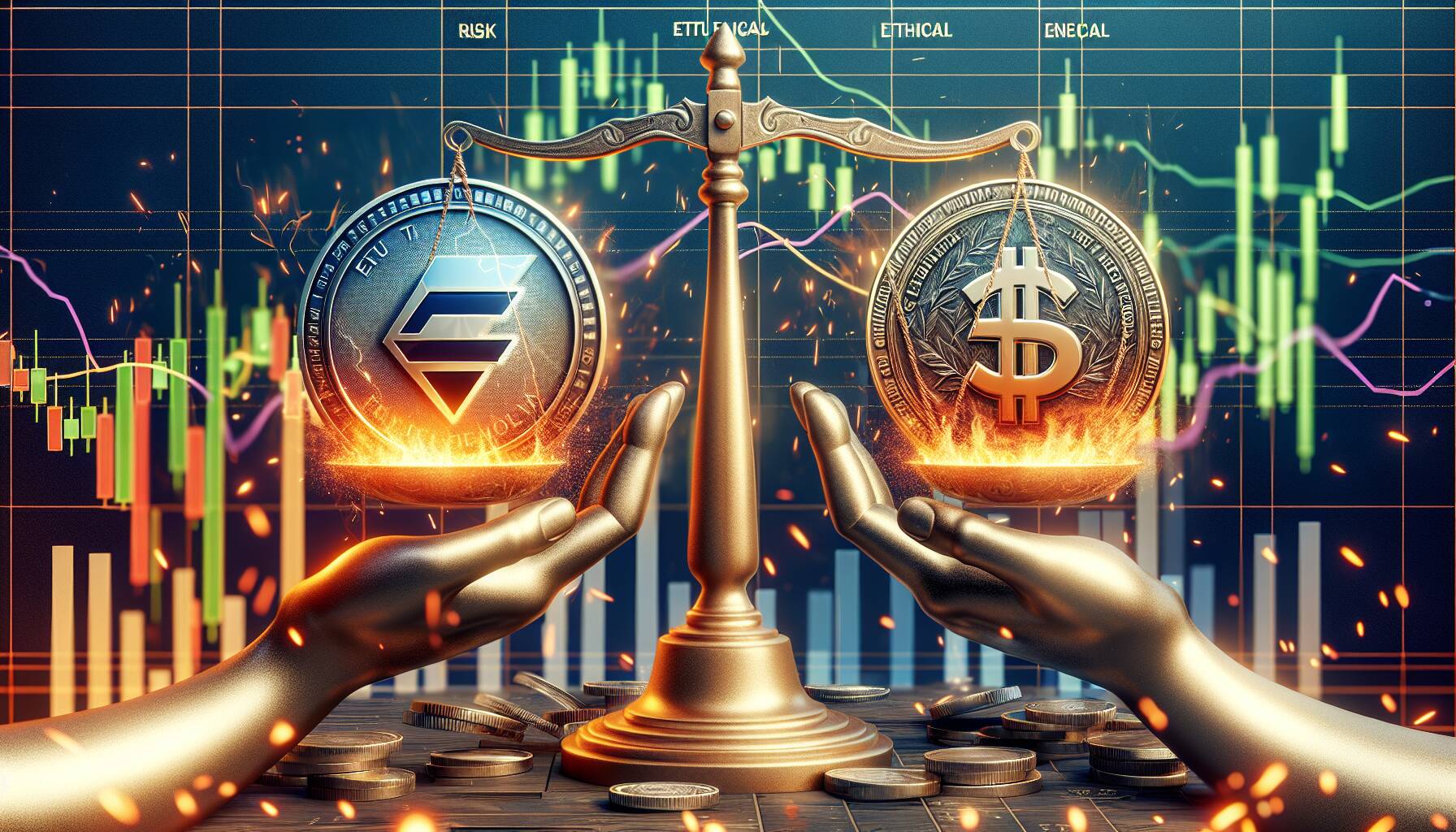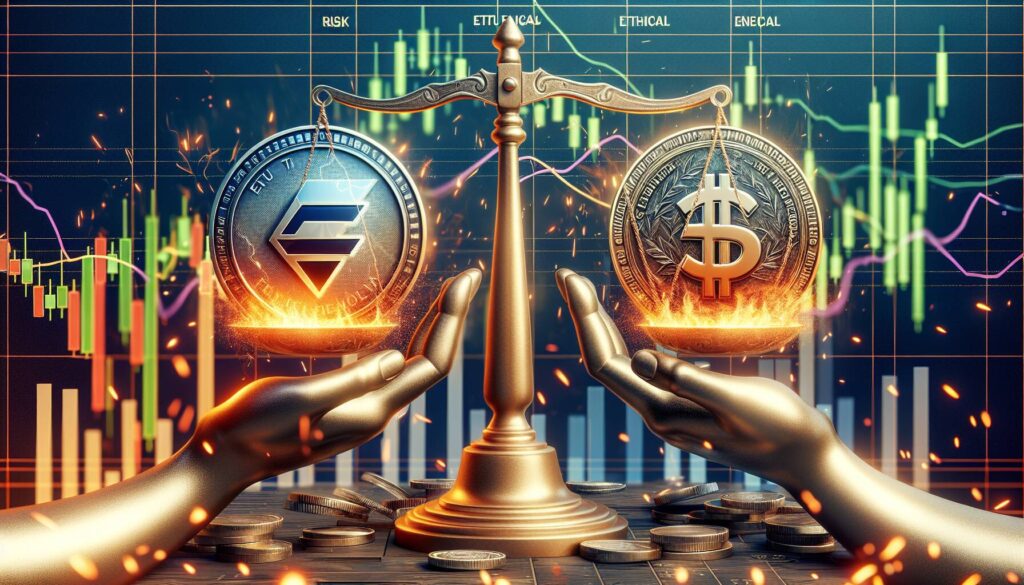The cryptocurrency landscape is witnessing a noteworthy shift as institutions, which historically took years to embrace prominent digital assets like Bitcoin (BTC), are now exploring newer frontiers. Following the successful launch of spot Bitcoin exchange-traded funds (ETFs) that attracted diverse entities such as pension and hedge funds, the focus is now shifting towards a more controversial category—meme coins. Recent filings with the Securities and Exchange Commission (SEC) reveal plans to introduce ETFs that track popular meme coins like Dogecoin (DOGE) and even a cryptocurrency associated with former President Donald Trump, aptly named Trump coin (TRUMP).
This budding interest in meme coin ETFs raises significant ethical questions within the financial community. While Bitcoin and Ethereum’s Ether (ETH) are recognized for their utility and established market presence, meme coins often derive their value from speculation and social influence rather than tangible applications. James Angel, a faculty member at Georgetown University, expressed skepticism about the long-term viability of meme coins, emphasizing the need for responsible marketing by ETF sponsors. He cautioned against promoting such products as sound investment options, given that their value can be highly volatile and reliant on public sentiment.
“Opinions vary greatly on the value of meme coins,” Angel stated. “However, a sponsor of an ETF based on meme coins needs to be very careful in the marketing of the ETF.”
Despite the contentious nature of these assets, some industry insiders believe that meme coin ETFs may find their way to approval by the SEC. Steve McClurg, former CEO of Valkyrie, voiced concern about the fiduciary responsibilities associated with such investments, suggesting that the underlying nature of meme coins makes them especially risky. He outlined the precarious balance funds must navigate when considering investments that are seen by many as destined for collapse once the initial hype subsides.
The debate intensifies when considering the political implications of cryptocurrencies associated with high-profile figures. As Nic Carter, a crypto influencer, pointed out, there are significant ethical dilemmas when public leaders venture into the cryptocurrency space, particularly with products that may be viewed as lacking fundamental value.
“Call me old fashioned but I think presidents should focus on running the country and not launching scam tokens,” Carter remarked in a recent post.
This softening stance towards meme coins is not without its critics and will undoubtedly continue to provoke discussion in both investment circles and among the broader public. As more applications for meme coin ETFs emerge—alongside a backlog of others under consideration—the future of this quirky yet contentious asset class remains to be seen.

Implications of Meme Coin ETFs in the Cryptocurrency Market
The emergence of meme coin ETFs has sparked debates and concerns within the financial community regarding their legitimacy and ethical implications.
- Transition to Meme Coin ETFs:
- Institutions have only recently begun to adopt bitcoin as a legitimate investment.
- Spot Bitcoin ETFs have paved the way for consideration of meme coin ETFs.
- Lack of Utility:
- Meme coins like Dogecoin (DOGE) and Trump coin (TRUMP) provide no actual utility.
- Their value heavily relies on public perception rather than intrinsic worth.
- Ethical Concerns with Marketing:
- There is skepticism over marketing meme coin ETFs as reliable investment vehicles.
- Experts caution against promoting such assets as prudent investments.
- Potential for Approval:
- Despite concerns, there is a belief that the SEC will eventually approve memecoin ETFs.
- Political dynamics may influence the approval process as seen with the current presidential involvement.
- Division in the Crypto Community:
- Meme coins evoke mixed feelings among crypto enthusiasts, from enjoyment to ethical concerns.
- Some see them as fun assets, while others view them as potential “scams.”
“Call me old fashioned but I think presidents should focus on running the country and not launching scam tokens.” – Nic Carter
The developments surrounding meme coin ETFs can have significant impacts on investors, particularly those who might be considering the risks associated with highly speculative assets. As financial literacy continues to evolve, understanding the nature and potential volatility of these investments becomes crucial for making informed decisions in the ever-changing crypto landscape.
Meme Coin ETFs: The New Frontier or Potential Pitfall?
In the fast-evolving landscape of cryptocurrency investments, the emergence of meme coin ETFs is stirring a potent mix of excitement and skepticism. While the introduction of spot bitcoin ETFs signaled a significant shift in institutional investment attitudes toward cryptocurrency, a shift that took over a decade to materialize, the idea of ETFs tracking less-reputable tokens like dogecoin (DOGE) and Donald Trump’s controversial Trump coin (TRUMP) raises eyebrows and ethical questions.
The competitive advantages of meme coin ETFs lie in their potential to democratize access to speculative trading. Investors with a penchant for high-risk opportunities could find new avenues to capitalize on swift market movements often associated with meme coins, which have garnered considerable attention and trading volume on platforms like Robinhood and Binance. However, such advantages come with notable disadvantages. Unlike established cryptocurrencies like bitcoin and Ethereum, meme coins are notorious for their volatility and lack of intrinsic value, which could lead to catastrophic losses for unsuspecting investors who might mistake these vehicles for reliable investment options.
Experts like James Angel warn of the ethical implications surrounding the marketing of these ETFs. With the risk of misrepresenting the speculative nature of meme coins, there is a legitimate concern that retail investors, particularly those unaccustomed to the intricacies of cryptocurrency markets, could be misled into viewing these products as safe investments. The skepticism shared by industry veterans like Steve McClurg adds further weight to this argument—his view that investing in assets “meant and designed to go to zero” challenges the very foundation on which investment vehicles should be established.
This new ETF trend could attract a younger demographic who engage with cryptocurrencies more as a means of entertainment than a traditional investment vehicle. However, this audience’s enthusiasm for trading meme coins could backfire, especially when faced with sharp market corrections and the subsequent emotional fallout of financial loss. It also creates a ripe environment for pump-and-dump schemes, which have been relatively easy to perpetrate in the meme coin space.
The increased interest in meme coin ETFs may also exacerbate the divide within the crypto community. While some traders revel in the thrill, others regard these assets as distractions that could overshadow more sustainable projects. Additionally, political figures launching cryptocurrencies, as seen with Trump’s initiatives, may further complicate this narrative, raising questions about governance and conflict of interest in an already turbulent regulatory environment. Influencer Nic Carter’s criticism of political leaders engaging in crypto initiatives underscores a growing concern about the impact of personal interests on public policy.
As excitement builds around the introduction of meme coin ETFs, it’s essential for potential investors to tread carefully. While they may have the opportunity for high rewards, the accompanying risks could create substantial problems for those who don’t fully understand the gambling-like nature of these investments. The landscape is as thrilling as it is precarious, and investors would do well to remain informed and cautious in this rapidly evolving space.

















